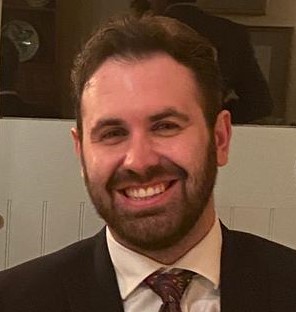___________________________________________
Prime minister, Rishi Sunak, laid out yesterday his five plans for the UK. For us, the health service, he pledges:
“NHS waiting lists will fall and people will get the care they need more quickly.”
This announcement conveniently comes on the same day a man was forced to carry his grandfather, who was in cardiac arrest, into A&E. For the non-medical amongst you, cardiac arrest literally means heart-stopped i.e. the grandfather was clinically dead.
You will not find a more poignant metaphor for the state of the NHS than a man carrying his grandfather’s dead body into A&E as the ambulance took too long to arrive. Fortunately the grandfather survived, just.
A large number of A&E departments in the UK have declared critical incidents as they are no longer able to cope with the vast number of patients awaiting treatment.
This has lead to dangerous and unprecedented practices in hospitals; such as patients waiting for more than 24 hours in A&E, receiving treatment in makeshift cubicles or in the back of ambulances, and overfilling already-crowded wards.
Under condition of anonymity, an A&E consultant tells a story that is unfolding in some form or fashion, up and down the country:
___________________________________________
District general hospitals have few specialist services, and some have none. This is causing more safety problems and delays the timely treatment of heart attacks, strokes and other emergencies that require specialist teams. This leads to patient harm. At the same time, staff are harmed.
NHS staff can suffer a psychological injury called ‘Moral Injury’. They experience the tragedy of being literally unable to do what they morally believe to be the right thing to do.
Let me tell you a story…
Mike is a successful business man, on holiday in the Cotswolds. His indigestion has been irritating him since Christmas dinner. Because he likes to think himself a good and upstanding citizen, instead of burdening A&E, he rings NHS111. On the phone he is told that, yes, even though his girlfriend could take him to A+E in their car, it would be safer to take him in an ambulance.
The next morning, he remains in pain which has worsened since last night. However the ambulance finally arrives. Mike’s ECG (heart trace) looks OK, but his blood pressure is quite high – he’s also quite pale. The paramedics decide to take him to the nearest district general hospital.
Credit. Pexels
The ambulance triage nurse (yes, you read that correctly – triage nurses used to only work inside from a desk, now triage comes to you!) greets Mike and looks him over. He’s clearly too unwell to sit in the waiting room, but there’s no room anywhere else. The triage nurse arranges blood tests and he remains in the ambulance, left under the watchful and capable eye of the ambulance crew.
Two hours go by and a life threatening 999 call is made to the ambulance control centre – a child is not breathing. There are no available ambulances to attend.
A decision is made by the ambulance control team to dispatch Mike’s paramedics to the unwell child – a ‘drop and go’. Mike is left by the paramedics on a chair next to the triage nurse as there are no trolleys, no cubicles, and no space left in the corridor.
Shortly after Mike’s drop and go, the laboratory rings. Mike’s blood results show he is having a heart attack. He’s still in pain and now his ECG is starting to show signs of heart muscle damage. The district general hospital hasn’t had a cardiology service for the emergency treatment of heart attacks for many years, but now he needs an urgent angiogram to remove the blockage in his arteries.
However, there are no ambulances available to take Mike to the nearest Cardiology Unit for his heart saving intervention. With every minute, more heart muscle dies due to lack of blood supply – time is muscle.
Credit. Pexels
The medical registrar (doctor) comes to help. It’s been a while since she read how to give medicines to dissolve blockages in the heart (this is an older treatment called thrombolysis). It’s certainly not the modern first choice of treatment and it hasn’t been for many years since stents arrived on the scene, but its all she can do to prevent his heart attack getting worse.
So, lets unpick who has come to harm.
- Mike has come to harm – because he could not get to the right place at the right time to get the right treatment.
- The child waiting for an ambulance has come to harm – because they didn’t get timely lifesaving help.
- The paramedics have come to harm – because they had to choose which course of action was the least worst thing: Leaving a patient with a heart attack in an unsafe place or leave a child who might be dying.
- The triage nurse has come to harm – because she experienced the moral injury of knowing she was stopping paramedics doing their job and the distress of knowing that Mike wasn’t going to get the right treatment.
- The medical registrar has come to harm – through experiencing moral distress and anxiety – knowing that she had to choose between administering a complex and outdated treatment she was unfamiliar with, or not giving Mike treatment at all.

Credit. Pexels
All patients, staff, hospitals and scenarios are entirely fictional in this story but there are similar true stories writing themselves every day in every department across the UK.
As always, best wishes from myHSN!




